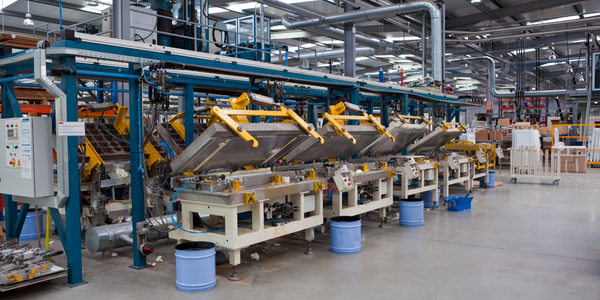用例
- 人员跟踪与监控
- 时间敏感网络
服务
- 培训
关于客户
里尔登酒吧 (Rearden's Bar) 于 1835 年首次开业,是爱尔兰科克的著名地标。它位于繁华的华盛顿街,被誉为科克最大的现场音乐和娱乐酒吧场所,吸引了来自爱尔兰各地的现场表演。酒吧还欢迎体育爱好者在大屏幕上观看现场比赛。 Rearden's 酒吧在 9 个地点拥有 400 多名员工,是一个活动中心,拥有各种场所供顾客享受,无论是喝一杯鸡尾酒还是跳舞放松一下。酒吧的墙壁上装饰着历史悠久的 GAA 和橄榄球比赛节目和门票,象征着其对体育和爱尔兰根深蒂固的热情。
挑战
Rearden's Bar 是爱尔兰科克市的热门娱乐场所,尽管取得了成功,但仍面临着一些运营挑战。九个分支机构拥有 400 多名员工,管理层发现日程安排是一项艰巨的任务。使用 Excel 创建日程安排效率低且耗时,尤其是对于跨地点的共享员工而言。此外,当员工预订休假时,找到具有必要经验的合适替代者是一项重大挑战。管理层还希望更准确地监控员工时间,以更好地承担责任和遵守规定。他们需要一个集中式系统来存储所有必要的文档,以便在需要时轻松访问。此外,手动输入工资数据经常会导致错误,导致问题反复出现,并因工资不正确而引起员工不满。
解决方案
Rearden's Bar 实施了 Bizimply(一种劳动力管理软件)来解决他们的运营挑战。该软件极大地改进了调度,允许管理层创建流行的轮班时间并区分不同的酒吧位置,以便更好地了解员工分配。该软件还可以更准确地监控时间和出勤情况,从而实现始终准确的工资单。成本的实时可见性帮助企业更有效地安排员工时间,实现员工数量和客户需求之间的平衡。人力资源团队可以将所有员工文档安全可靠地存储在其 Bizimply 帐户中,确保合规性并在需要时轻松访问。该软件还简化了入职清单和员工培训提醒,为团队节省了大量时间。
运营影响
数量效益

Case Study missing?
Start adding your own!
Register with your work email and create a new case study profile for your business.
相关案例.

Case Study
Goldcorp: Internet of Things Enables the Mine of the Future
Goldcorp is committed to responsible mining practices and maintaining maximum safety for its workers. At the same time, the firm is constantly exploring ways to improve the efficiency of its operations, extend the life of its assets, and control costs. Goldcorp needed technology that can maximize production efficiency by tracking all mining operations, keep employees safe with remote operations and monitoring of hazardous work areas and control production costs through better asset and site management.

Case Study
Cisco Kinetic for Oil and Gas: Refineries and Plants
The plant manager and safety teams needed a solution that provided near real-time visibility of gas detection and personnel location, with easy to understand visualization and alerting dashboards. This would enable them to improve productivity through decreasing the time taken to start work, optimize evacuation route planning, and to meet critical staff safety and compliance goals.

Case Study
Industry 4.0 at ALPLA: Enhancing Factory Efficiency with IoT
ALPLA, a global leader in packaging solutions, faced several challenges as the complexity of their production machinery increased. The need for highly trained specialists in each factory led to higher personnel costs, difficulties in recruiting experienced talent at each location, and costly personnel turnover. Furthermore, less experienced operators running the machines sub-optimally impacted resource consumption and overall equipment effectiveness (OEE). ALPLA also faced the challenge of monitoring visual inspection systems in every line of their plants, which was almost impossible to do manually. In 2016, ALPLA decided to use data from the 900 different types of embedded sensors in each factory to address these issues. However, their initial choice of SQL Server as the data store for the sensor data proved inadequate, as it was unable to cope with their data requirements.

Case Study
Digital Transformation of Atlanta Grout & Tile: An IoT Case Study
Atlanta Grout & Tile, a Tile, Stone & Grout restoration company based in Woodstock, Georgia, was facing challenges with its traditional business model. Despite steady growth over the years, the company was falling behind the web revolution and missing out on the opportunity to tap into a new consumer base. They were using independent software from different vendors for each of their department information and workforce management. This resulted in a lot of manual work on excel and the need to export/import data between different systems. This not only increased overhead costs but also slowed down their response to clients. The company also had to prepare numerous reports manually and lacked access to customer trends for effective business decision-making.

Case Study
Centralizing Data for Improved Efficiency: A Case Study on Malvern Panalytical
Malvern Panalytical, a UK-based hi-tech electronics company, was grappling with the challenge of decentralized data storage. The company had a vast amount of unstructured data scattered across various platforms, from hard drives to emails and floppy disks. This made the data searching process extremely cumbersome and inefficient. The company's rapid growth, from 200 to over 1,000 employees in a decade, and expansion across three continents further exacerbated the need for a more structured and centralized data system. As a company involved in electronics manufacturing and software development, it was crucial for Malvern Panalytical to find a platform that could structure all their data, track all modifications of documents in real time, and provide clear visibility of the internal information flow across all its facilities.








